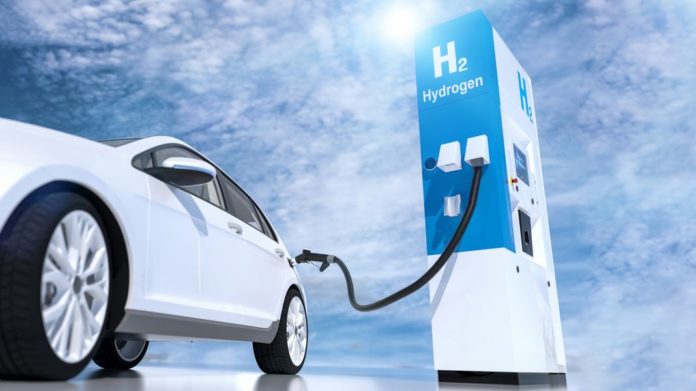
IT might take ten years before hydrogen fuel technology is cost competitive with traditional fossil fuels, according to Mark Cutifani, CEO of Anglo American.
Speaking during the launch of the firm’s sustainability report in April – which will become a bi-annual event in future owing to increased investor attention on the matter – Cutifani said development efforts over the next two to three years will be “crucial”.
That’s the time frame given to a joint research effort between Anglo’s 80%-owned Anglo American Platinum (Amplats) and Umicore, a Belgian materials handling and recycling company. The parties are hoping to prove up chemistry that would enable hydrogen fuel to be transported to forecourts in tankers akin to the current delivery of petroleum.
Being able to refuel an FCEV quickly and inexpensively is the key to adoption of the technology as a secondary fuel option (the primary usage of hydrogen being in industry). Currently, a refuelling point requires hydrogen to be electrolysed.
“It’s a journey with Umicore in understanding how we use the new metals in these new applications,” said Cutifani. “It’s a two- to five-year period, but we’re looking out beyond 2030,” he said.
The technology Amplats and Umicore is investigating is having hydrogen bond to a liquid that’s then converted by a fuel cell electric vehicle (FCEV), rich in platinum group metals, specifically platinum and the lesser known element, iridium. This is the ‘new’ metal to which Cutifani refers.
It should be noted that there’s nothing especially new about fuel cells. During the Nineties there was a lot of excited talk about their impact on platinum demand. But today’s enthusiasm comes on the back of a structural deficit in PGMs that has shone a light on the market role of other metals in the PGM basket.
Take rhodium: it is a relatively junior member of the PGM family in terms of its occurrence with other elements, and yet it currently comprises as much as half of total metal revenues for PGM producers. What, then, could one expect of another metal – iridium – which has application to fuel cell technology?
TIME HAS COME
Before unlocking the by-product revenues of iridium, however, there is the unsolved problem of how to make FCEVs an integral part of the ‘drivetrain’, the term the PGM sector uses to refer to its application to modern transport. Achieving widescale adoption of FCEVs will take time and will require a major infrastructural rollout.
Yet analysts think the seeds for FCEV have already been sown. According to reports this year by BMO Capital Markets and JP Morgan Cazenove, the false start experienced by FCEVs in the Nineties is likely to be avoided in the next ten years, even if the electric vehicle market is currently dominated by batteries powered with lithium-ion technology.
“Right now, we may view lithium-ion batteries as the current star of the zero emissions vehicle ‘show’, and fuel cells as the talented – understudy awaiting their ‘big break’ – however, given the well-thought plans, the increase in public spending, and successful trials of fuel cell vehicles in trains and transit buses, it is only a matter of time before the understudy comes into the spotlight as well,” said BMO in its report.
For this to happen, a number of stars need to align. One is public policy. Without political and regulatory support, FCEV adoption will be stillborn.
According to JP Morgan Cazenove, the lithium-ion EV industry is “… approaching the tipping point of becoming commercially viable without subsidy”. In its view, this supports the model that subsidy produces scale which in turn provides for lower cost and technology advancement, and results in commercialisation. “This could become a reference point for policy makers to firmly support the development of the FCEV chain,” the bank said.
A number of technological hurdles also need to be overcome before the necessary efficiencies can be realised on a large scale basis in the transport sector, which is the force behind the Amplats, Umicore research and development strategy.
But even before that, hydrogen extraction itself needs to become decarbonised. Today’s hydrogen production is referred to as polluting ‘grey hydrogen’. It needs to evolve into low and zero emission blue and green hydrogen – a costly process. Still, the benefits on offer are enormous for PGM producers.
According to JP Morgan, each 1% penetration in China’s domestic auto market is about 250,000 units of vehicle sales. Assuming Renimbi 1 million per car – about $150,000 – this is already a Rmb250bn ($37.5bn) market without taking into consideration the affiliated refuelling infrastructure and services. There’s massive incentive to take this up.
“This would be good news for us,” said Cutifani on the prospect of FCEVs getting traction in the market. “It’s interesting to see that some of our competitors are starting to invest in downstream research. I think the mining industry is beginning to understand the relevance,” he said.








